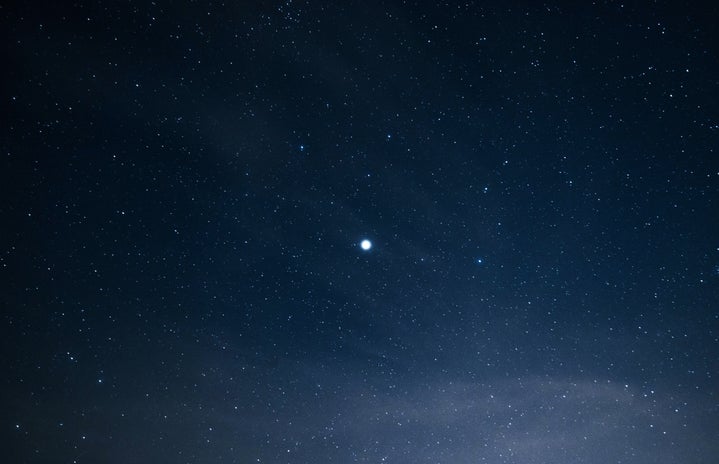Are you looking to get into stargazing? Or maybe you’re just a seasonally depressed university student like me that is struggling to get outside. Either way, I’ll have to warn you–I haven’t actually tried stargazing myself. However, I plan on embarking on a stargazing adventure after completing research for this article and I sincerely hope you do too! Stargazing, the act of objectively observing the stars and subjectively pondering the secrets of the universe, has been found to provide many benefits for one’s mental wellness, specifically in aiding stress reduction and sleep. As winter’s uninviting cold and wind isolate us indoors, it’s important to continue to make efforts to go outside–but alas, what to do outside during the winter? I believe stargazing is a great activity that is reliable, accessible, and allows for some amazing reflection and wonder to take place. Are you not sure where to start? In this article, I’ll outline some of the most well-known winter constellations (especially during our January/February months) including Orion, Taurus, and Lepus, that you can keep an eye out for during your next (or first!) stargazing trip.
1. Orion the Hunter
Orion is first on my list due to it being the most recognizable and easiest to spot in the winter night sky! This is due to its distinctive belt (Orion’s Belt) that consists of three stars (Alnitak, Alnilam, and Mintaka–all in our Milky Way galaxy!) positioned in a relatively straight line. Appearing most prominently from January to March, you can be sure to spot the Orion by stargazing when it shines brightest, which would be 9 to 10 p.m. local time. Two other major stars to look for are Betelgeuse, highlighted at Orion’s right shoulder with an orange glow, and Rigel, the brightest star in Orion, featured near Orion’s left knee with a blue glow.
2. Taurus the Bull
Taurus, meaning bull in Latin, is another large winter constellation found close to Orion and easily recognized due to two particular bright stars: Aldebaran (a reddish-hue star acting as one of the bull’s fiery eyes) and Elnath (a bluish-hue star marking the end of one of Taurus’ horns). Other key locations to find are the two open star clusters, also known as asterisms, named the Hyades and the Pleiades. The Hyades make up the bull’s face, and the Pleiades, in the shape of a tiny dipper, can be easily spotted by following the diagonal line of Orion’s belt upwards in the night sky. Appearing from October to March, it shines brightest on January evenings.
3. Lepus the Hare
Although you may need to get to a higher latitude to see the Lepus, another significant winter constellation, it is most prominent during January and February evenings and can be located by looking under Orion’s feet. The brightest star in the constellation, Alpha Leporis (also known as Arneb), is located in the center and has a yellowish hue in the night sky. The only other star with an official name is Beta Leporis (also known as Nihal) which also has a yellowish hue and is found under Arneb.
During this winter term, let’s remember to take care of our mental health and implement activities in our routine to destress from daily living. Stargazing is an evidence-based and holistic opportunity to connect with nature, observe fascinating constellations, and reflect your existence as a tiny speck in the universe! Although Hamilton does have some light-pollution, great places to visit include nearby conservation areas, such as Binbrook Conservation Area! Of course, you can also drive north out of the city, into the country for some beautiful sights as well. I look forward to seeing you all in the stars. ⋆。°✩


